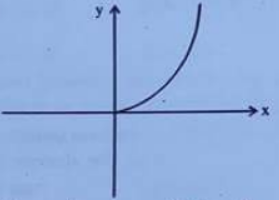Which of the following is not allowed in a given equation?
Adding the same number to both sides of the equation.
Subtracting the same number from both sides of the equation.
Multiplying both sides of the equation by the same non-zero number.
Dividing both sides of the equation by the same number.
To solve the question "Which of the following is not allowed in a given equation?", we need to analyze the options provided.
1. Understanding the Operations on Equations:
- In mathematics, when we have an equation, we can perform certain operations on both sides of the equation without changing the equality. These operations include adding, subtracting, multiplying, or dividing by the same non-zero number.
2. Analyzing the Options:
- Option A: Adding the same number to both sides of the equation.
- This is allowed. If we have an equation like x=5, adding 3 to both sides gives x+3=8, which is still true.
- Option B: Subtracting the same number from both sides of the equation.
- This is also allowed. For example, if we have x+3=8, subtracting 3 from both sides gives x=5, which maintains the equality.
- Option C: Multiplying both sides of the equation by the same number.
- This is allowed as well. If we multiply both sides of x=5 by 2, we get 2x=10, which is still valid.
- Option D: Dividing both sides of the equation by the same number.
- This operation is allowed only if the number is non-zero. Dividing by zero is not allowed in mathematics because it is undefined. Therefore, if the option states dividing by zero, that would be the operation that is not allowed.
3. Conclusion:
- Based on the analysis, the operation that is not allowed in a given equation is dividing by zero. Hence, the correct answer is Option D.
- In mathematics, when we have an equation, we can perform certain operations on both sides of the equation without changing the equality. These operations include adding, subtracting, multiplying, or dividing by the same non-zero number.
- Option A: Adding the same number to both sides of the equation.
- This is allowed. If we have an equation like x=5, adding 3 to both sides gives x+3=8, which is still true.
- Option B: Subtracting the same number from both sides of the equation.
- This is also allowed. For example, if we have x+3=8, subtracting 3 from both sides gives x=5, which maintains the equality.
- Option C: Multiplying both sides of the equation by the same number.
- This is allowed as well. If we multiply both sides of x=5 by 2, we get 2x=10, which is still valid.
- Option D: Dividing both sides of the equation by the same number.
- This operation is allowed only if the number is non-zero. Dividing by zero is not allowed in mathematics because it is undefined. Therefore, if the option states dividing by zero, that would be the operation that is not allowed.
- Based on the analysis, the operation that is not allowed in a given equation is dividing by zero. Hence, the correct answer is Option D.
Topper's Solved these Questions
- SIMPLE EQUATIONSBOOK - NCERT EXEMPLARCHAPTER - SIMPLE EQUATIONSEXERCISE - EXERCISE(Fill in the blanks )
50 Videos
- SIMPLE EQUATIONSBOOK - NCERT EXEMPLARCHAPTER - SIMPLE EQUATIONSEXERCISE - EXERCISE (True -False )
7 Videos
- SIMPLE EQUATIONSBOOK - NCERT EXEMPLARCHAPTER - SIMPLE EQUATIONSEXERCISE - Thick and Discuss
6 Videos
- RATIONAL NUMBERSBOOK - NCERT EXEMPLARCHAPTER - RATIONAL NUMBERSEXERCISE - Application
2 Videos
- TRIANGLESBOOK - NCERT EXEMPLARCHAPTER - TRIANGLESEXERCISE - EXERCISE TRUE OR FALSE
69 Videos
Similar Questions
Knowledge Check
Which of the following joints allow movement in all directions?
AHinge jointBBall and socket jointCPivot jointDGliding jointWhich of the following activity is NOT allowed for Payment banks in India?
AAccepting depositBOffering remittance facilitCDistribuing simple insurance productsDLading moneyWhich one of the following joints will not allow movement ?
Afibrous jointsBCartilaginous jointCSynovial jointDBall and socket join
Which of the following equation is best representation of given graph's?

View SolutionWhich of the following quantum numbers is/are not allowed?
View SolutionWhich of the following method allows the production of direct current?
View SolutionIn which of the following options is the given figure embedded (rotation is NOT allowed).

View SolutionWhich of the following equations will best fit for the given data ?

View Solution

